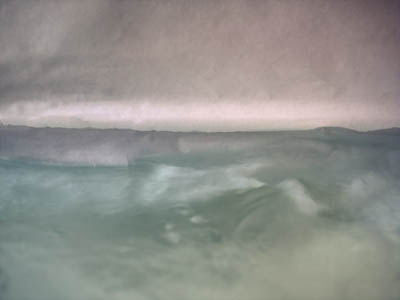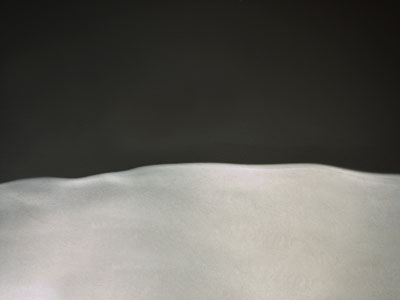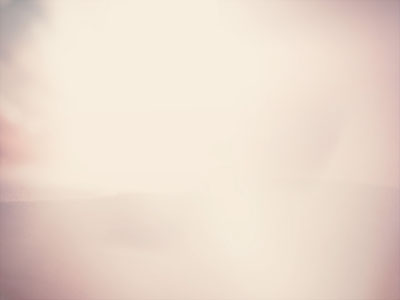


The Voyage To The Ends Of The World can be viewed here.
Singaporeans as islanders take to heart a very outward looking approach to art making and art thinking. The journey is often thematised in practice, whether as an exhibition concept such as the recent At Home Abroad show at the 8Q wing of the Singapore Art Museum or in the development of a body of work, such as Jason Wee’s atmospheric series, Ruins – Captain’s Log Entries on Days Without End, currently on hang in KL. The journey away – the journey outside – is very much a rite of passage for many artists.
More recently, I come to know of artist photographer Jovian Lim, whose exploration of the journey in The Voyage To The Ends Of The World, is an internalisation of the mythical heroic journey (think Joseph Campbell’s idea of the monomyth), using the photographic medium to convey the emotional weight associated with an abstract passage towards self discovery.

The Voyage can be viewed as an online exhibition, an increasingly common platform used by Singaporean artist photographers, who have been taking advantage of its accessibility and affordability to promote their works. More importantly they have also experimented with the novelistic structure of the book on these artistic websites, creating narrative frameworks that introduce viewers into a psychologically personal world, just as much as they use photography to draw in elements from our physical environment.
Genevieve Chua’s empathetic study of a local subculture of androgynous girls, Raised as a Pack of Wolves, commissioned by the Singapore Fringe Festival, is one example. Given that Jovian is a college mate of Genevieve, it is not surprising that he too shares an interest in experimenting with this structure.
The Voyage is very much a photographic story about withdrawal, reversing the real life trend of artists traveling out of Singapore by looking inwards. But this introspection is essentially also a process of photographic transformation, the turning of everyday materials into atmospheric and abstract registers.
Using plastic bags, dry ice, paper, texture of the wall, Jovian recreates the grandeur of a perennial myth, staging the sublimating process in which art’s transformative function is highlighted. In this sense, the voyage is also a creative journey through which our most banal of material is reshaped.

This transmutation suggests that our growth – mental, spiritual, emotional – are drawn from the things around us and it acknowledges the photographic debt to our everyday world. Because of this, I also like to think of the futuristic predicate of the voyage as a metaphor for the direct reality we face each day, one day after the next. The journey is our confrontation with the world at large.
Jovian’s voyage follows a linear progression – starting out, setting sail, the encounter and the destination and the realisation. It reenacts what many of us considers to be our most common human story through the structure of a novel, leading us along a determined narrative, organised through a prologue and epilogue alongside five chapters that is unchanged and fixed.
Each chapter is given an atmospheric title, beginning with ‘Origins’ in prologue, we are brought along Jovian’s discovery through a successive chain of events and experiences sequentially noted as ‘The Departure’, ‘The Gale’, ‘Night Fall’, ‘The Abyss’, ‘Ultimate Reality’ and ‘Communion’.

We encounter the ultimate reality in chapter five, a muted expression of a world coming in close contact with reality. The images that fall into succession are a repetition of the tropes that are found in the preceding chapters – smoke, water, texture of quotidian objects. It ends with an image flooded in white light. This image seeks to address two things at once, suggesting light as a the common denominator of an awakened state, as well as light as a formal property of photography. After all, photography means ‘light writing’.
What distinguishes Jovian’s inquiry from modernism’s quest towards self referentiality can be inferred from the finality that is invoked in the series, which is something that is left open-ended. Though the journey is a singular and linear event, ‘the ends’ suggest goals that are too open-ended, plural and ambiguous to be defined. Or perhaps one should say it is impossible to even express in definable terms what this achievement is. Its inexpressibility is something that is invoked through the plural register – the very many possibilities of signification, the surplus of meanings, that complicates the singularity of a final meaning.
The simplicity of this equation is articulated in the epilogue. Closing The Voyage are two images bathed in varying degree of light intensity. Aptly titled ‘Communion’, it is a moment in which the final destinations of a photographic practice is spelled out and differentiated by juxtaposition, suggesting the nuances of light quality as a possibility of different readings as much as that of different experiences.
Like the epilogue of all heroic quest, it is less a fable about an achievement than the return to reality with a special gift or insight. This final event is the moment where the hero imparts his knowledge or special powers to the community. In a communion, the reader/viewer is made aware that he is an active participant in the construction of meaning as well as non-meaning.
In the end, what is revealed is an exercise of reflexivity that alludes to the immense possibilities of the medium. Jovian Lim’s reflection of photographic medium is ultimately about its inconclusiveness. It suggests light as an apparent source but further deconstructs this source as something that is unquantifiable, elusive and ultimately possessing too many meanings, which could also paradoxically suggests that it is devoid of meaning.
While this inward journey departs along the line of a heroic quest, the answer that is arrived at in the end is one that is not founded on a fulfillment of one true idea, but the arrival at too many answers. But as the title of the epilogue suggests, this isn’t a disturbing realisation but one that is potentially liberating.
The Voyage To The Ends Of The World can be viewed here.
(SS)
Sorry, the comment form is closed at this time.
the weather
in
the
End of The World,in the pictures look…
Cool and silent
The weather on the north of Singapore
concrete swamp land call kuala Lumpur,
just as hot as Hell….another part of the
End of The world.
well.. it’s like I thought!